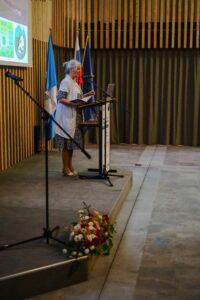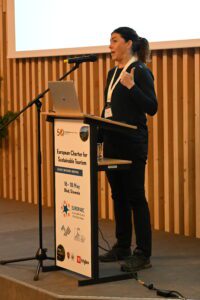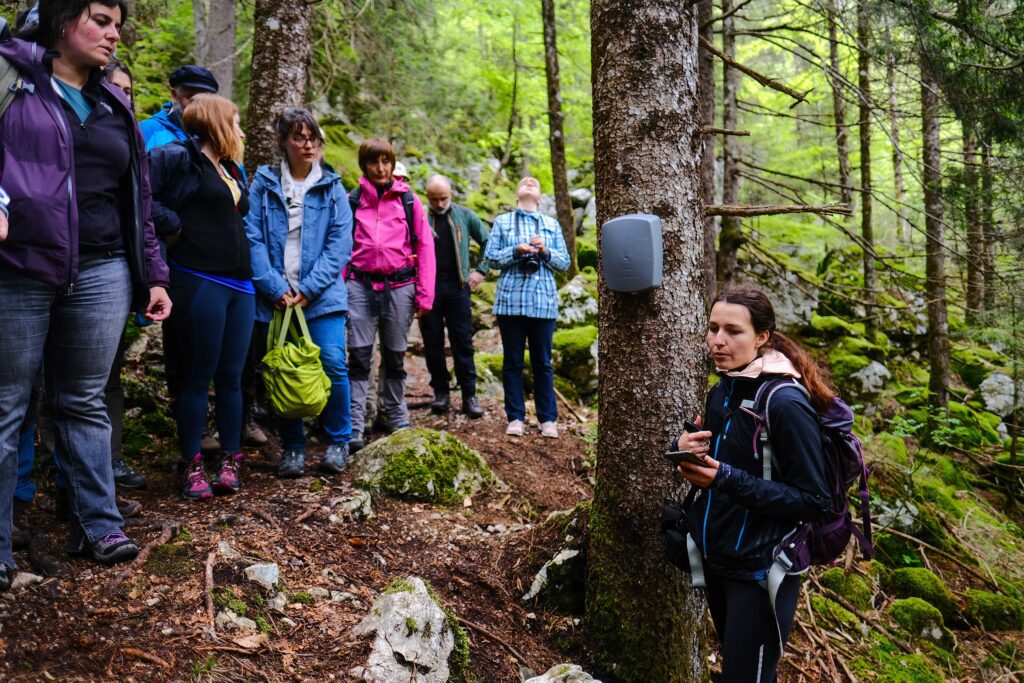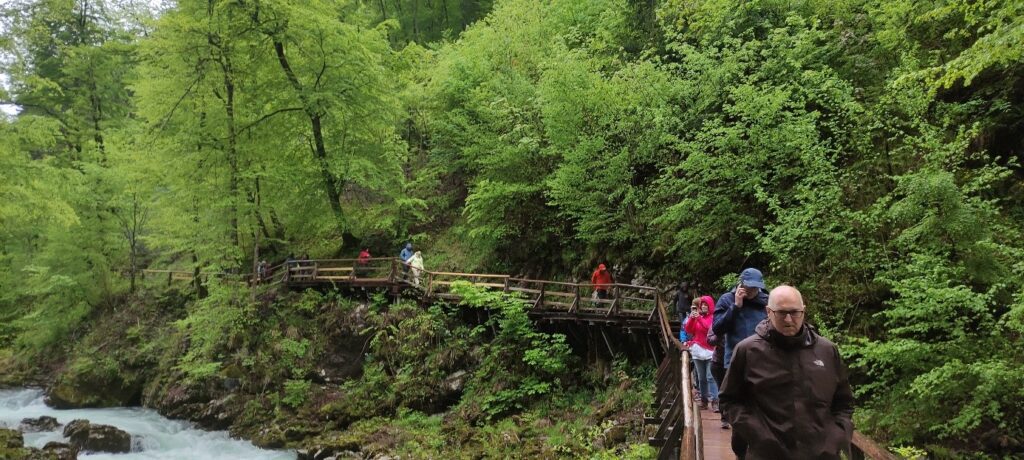The 12th edition of the ECST Network Meeting brought together 90 people from 20 countries that gathered in beautiful Bled, Slovenia.
Four years after the last meeting, ECST network members together with other participants had the chance to enjoy a 3-day exchange during which they could learn more about visitor management in Protected Areas and discover the gorgeous Transboundary Ecoregion Julian Alps, a Transboundary Sustainable Destination formed by the Triglav National Park (SLO) and the Parco Naturale Prealpi Giulie (IT).
The photos from the event can be seen here!
The European Charter for Sustainable Tourism in Protected Areas. Trends & Updates.
In the morning session, Carol Ritchie, EUROPARC Executive Director, gave an inspirational talk on recent trends in Sustainable Tourism worldwide, with social phenomena such as FOMO – Fear Of Missing Out and YOLO – You Only Live Once, governing the selection of destinations for many tourists after the COVID pandemic.

Teresa Pastor, ECST manager, presented the last updates regarding the governance and management of the European Charter for Sustainable Tourism in relation to the three parts of the award: 1. Sustainable Destinations, 2. Sustainable Partners and 3. Sustainable Tour Operators.

Visitor Monitoring Methodology in Triglav National Park – Challenges and Opportunities
Majda Odar, Head of Information and Education Service, presented the evolution in visitor monitoring in Triglav National Park, from simply counting visitors to cooperating with the Tourism Agency to get more information on visitors’ profiles through heat maps and direct surveys. Besides, they have also introduced different types of automatic counters in order to count both walkers and bikers. These valuable data are used to draw visitor management plans. The main objective now is to remove cars from the valleys by providing parking lots and shuttle services. Another idea put in place is the development of the Juliana Trail, a circular 270 km long trail from which visitors can admire Triglav from the distance, not from the core of the Park. It has 16 stages and runs along the edge of the Julian Alps and Triglav National Park.
The Juliana Trail is a win-win for hikers, tourism, and nature conservation.
As a national and iconic symbol, Triglav national park attracts millions of visitors all year round.
Click here to access the presentation.
United States National Park Service Approach to Estimating Visitor Use
Dr. Pamela Ziesler, Program Coordinator for Visitor’s Use Statistics for the US National Park Service, elaborated on how National Parks in the US are obliged to monitor and report visitor numbers on a monthly basis. The data collected is very useful to detect changes and trends as time passes. It is also useful to estimate the size of park facilities – restrooms, visitor centres, parking lots, roads, and trails and to estimate the diminished visitor experience or restricted visitor use when a park facility or resource is damaged. Besides, collected data is used internally for accident and incident reporting, risk management, transportation safety, and congestion management. Moreover, the data are used to estimate the economic impacts of park visitation, both the market and non-market value of parks. Pamela also explained the different methods they use to count visitors, ranging from direct counts to proxy counts – counting something other than individuals e.g. vehicles, kayaks, etc.
To learn more, access the presentation here.
Using Data Fusion to Improve Visitor Monitoring in Natural Areas
Samuel Chevrier, Market Leader for Eco-counter, the most widespread automatic visitor counter worldwide, introduced Outdoorvision, a project carried out in cooperation with the CREPS, ENOS founder, which consists of the fusion of Eco-counter data with GPS data from outdoor practitioners obtained from smartphone tracking apps.

Participants received in situ explanations from two types of automatic counters: a people counter as the one displayed in the picture and a bike counter, hidden in a trail where bikes are not allowed.
For more info please send an e mail to: samuel.chevrier @ eco-counter.com
Carrying capacity and implementation challenges in Vintgar Gorge, a highly visited area in Triglav National Park
Aleš Zdešar, responsible for carrying capacity studies and implementation of Visitor Management of Natural Monuments, proposed a methodology for estimating the carrying capacity of the Vintgar Gorge, a spectacular gorge in Triglav National Park, which is the second natural value visited in Slovenia after the lake Bled. In order to improve the visitor experience and reduce the impact on nature, some of the measures taken during the pandemic to reduce contact between visitors have been kept; one such measure is the adaptation of the path to a one-way direction instead of a two-ways direction path.

Triglav National Park has involved the tourism sector in the calculations in order to reach a common understanding. This process is as important as the result itself. It starts conversations and opens the question: How much is too much?
To know more about the calculation of carrying capacity in Vintgar Gorge click here.
To know more about the carrying capacity topic, click here (Carrying Capacity in Periurban Parks).
Open mic session
In an open mic session, participants had the opportunity to learn about other related initiatives and projects from different European countries.
You will be able to access presentations here:
- Heather Trench – Tracking visitor volume and value in UK National Parks
- Lilia Schmalzl – Humanita Interreg Central project
- Maeve Walsh – Failte Irelands Environmental Monitoring of Tourists -Overview
- Pavel Jurka – Eco-Visio.net visitors monitoring counter advantages and data sharing
- Marc Garriga Lujan – Regulations & carrying capacity in the Alt Pirineu Natural Park
- Monika Rusztecka-Rodziewicz – Approaches to the assessment of the carrying capacity in National Parks
- Tajana Ban Ćurić – Challenges in the management of Medvednica Nature Park, Croatia
- Evgeniia Leshina – Mobile application – our solution for tourism sustainability
Visits and guided tours
In addition, participants could either follow a guided tour to Soča Valley or visit the transboundary counterpart park – the Prealpi Giulie.
The last day was devoted to Lake Bohinj, which represents one of the most sustainably, innovative areas in Julian Alps Biosphere Reserve. Klemen Langus, director at Tourism Bohinj, explained his conception of tourism in the area and presented the successful International Wild Flower Festival, which has become a tourism attraction.
The webinar with Klemen Langus can be seen here.